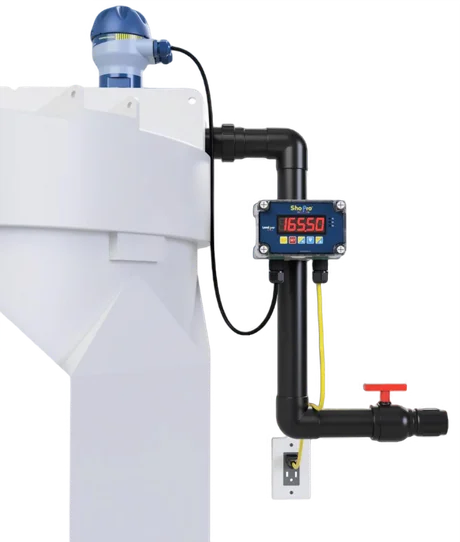What is Tank Level Monitoring?

The procedure known as “remote tank monitoring” entails utilizing wireless technology in order to monitor the amounts of liquids and chemicals contained within tanks while doing it from a remote location. Users can make use of a wide variety of benefits provided by this technology, some of which are as follows:
1. Efficiency: Remote tank monitoring enables the monitoring of the levels of liquids and chemicals in tanks from a remote location, which can be more efficient than manual inspections or level measurements. 2. Accuracy: Remote tank monitoring enables the monitoring of the levels of liquids and chemicals in tanks from a remote location. This can result in time and financial savings, as well as a reduction in the requirement for workers to be present on-site. As a result, the process will be more efficient overall.
2. Delivery of chemicals Using remote tank monitoring can assist in ensuring that chemicals are delivered to storage tanks at the appropriate times when they are required. When monitoring the levels of chemicals in tanks, it is feasible to forecast when a delivery is needed. This can assist to minimise stock-outs and reduce the risk of production downtime. Monitoring the levels of chemicals in tanks also makes it possible to predict when a delivery is needed.
3. View tanks on the cloud Remote tank monitoring can be done through the cloud, which enables simple access to the data and easy administration of the tanks. This feature is known as “viewing tanks on the cloud.” This makes it possible for data to be accessible from any location, and it also makes it possible for data to be easily shared with other users or systems, which makes it more convenient and efficient.
4. Keeping tabs on the number of chemicals used Remote tank monitoring makes it possible to keep tabs on the number of chemicals used, which can be helpful for inventory management, reducing costs, and complying with laws. This provides a distinct and accurate picture of the patterns of chemical utilization, which can be of assistance in making decisions.
5. Continuous level measurement: Submersible level sensors are frequently used in remote tank monitoring systems because they enable continuous level measurement. This makes it possible to monitor the tanks in real time, which can aid in the early detection of problems and make it easier to take corrective action in a timely manner.
6. Notification by text message or email Remote tank monitoring systems can also send alerts via text message or email when the tank level exceeds a specified threshold. These notifications can inform workers to take action when the tank level hits this barrier. The response time is increased as a result, and serious problems are avoided as a result.
7. Cost reductions: The use of remote tank monitoring can cut expenses by lowering the amount spent on maintenance and by eliminating stock-outs. It is also possible to detect leaks, overfills, and other problems that can cause damage to the tanks and the contents of the tanks, which can save money on the costs of repairing the damage.
In conclusion, remote tank monitoring is a powerful tool that offers a wide variety of benefits, including cost savings, efficiency, chemical delivery, simple management, tracking chemical usage, continuous level measurement, and SMS or email notifications. Additionally, remote tank monitoring is an easy way to manage the system. It makes it possible to monitor tanks from a remote location, which can result in time and cost savings as well as a reduced requirement for staff to be present at the site. The data are simply accessible from any location, and it is simple to exchange them with other individuals or computer systems. It is helpful for many kinds of tanks, but in particular for bulk chemical tanks, which are frequently situated in inaccessible or isolated locations.
Learn more about Sentinel Remote Tank Level Monitoring
Please contact us to discuss your application


